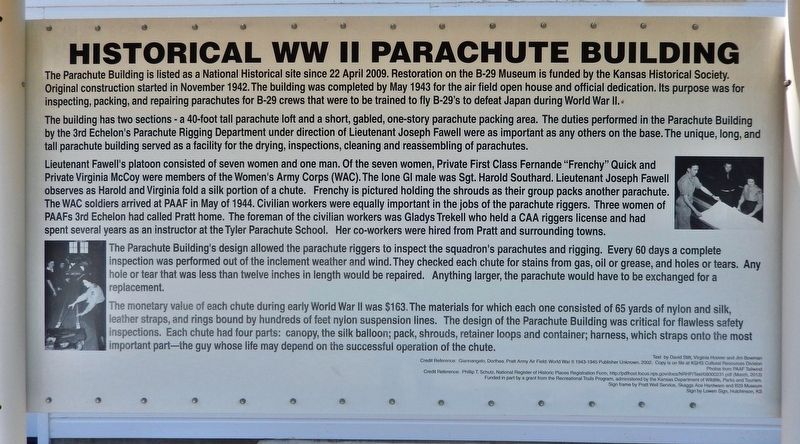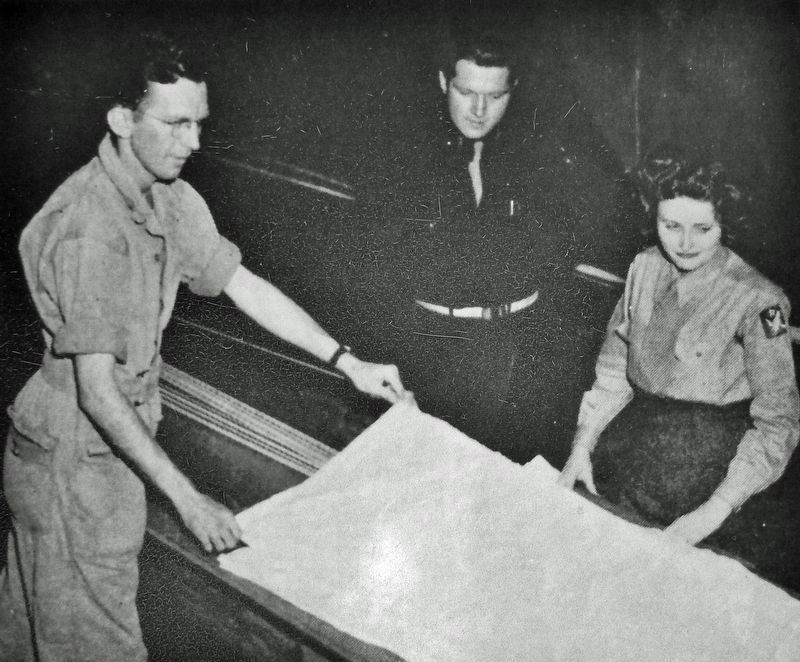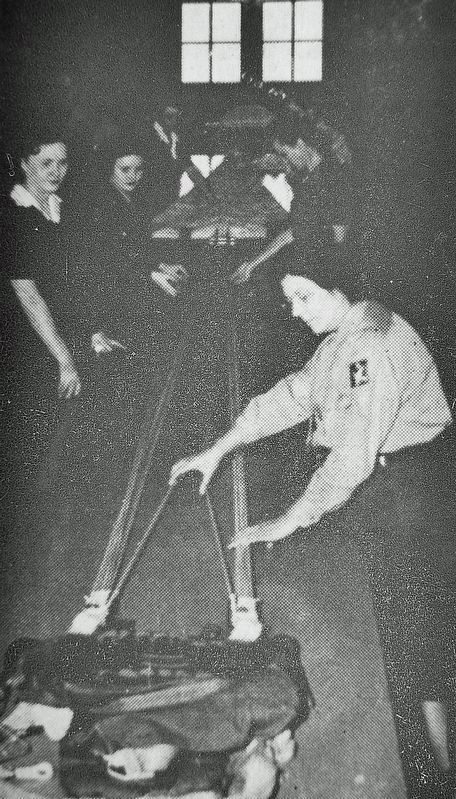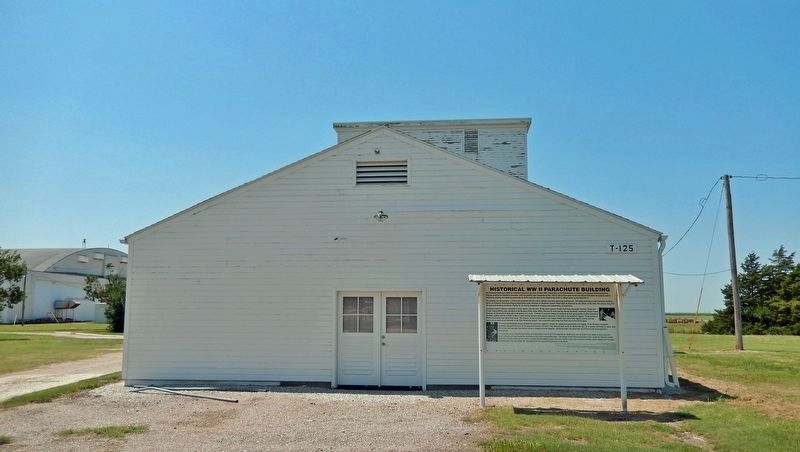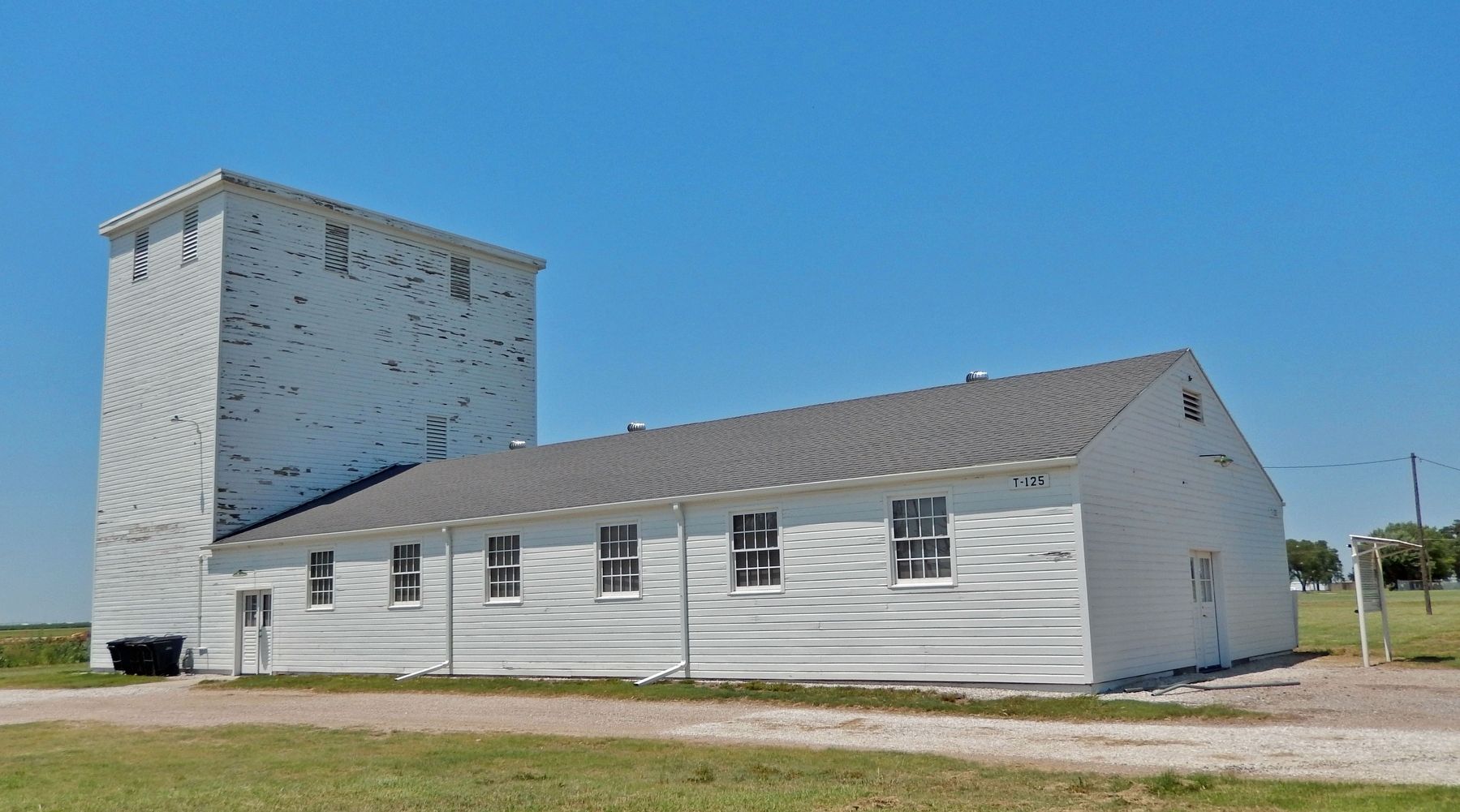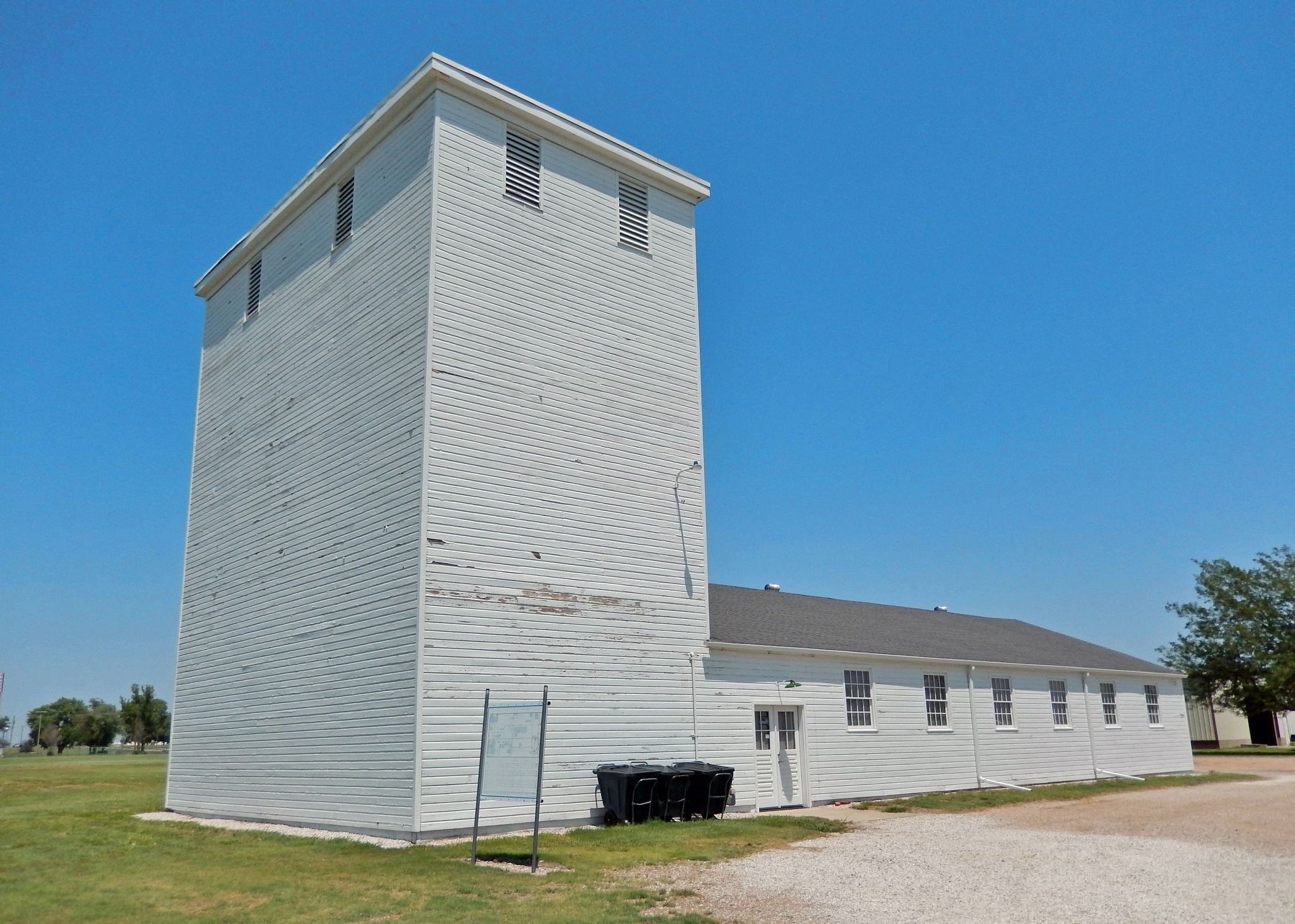Pratt in Pratt County, Kansas — The American Midwest (Upper Plains)
Historical WW II Parachute Building
The Parachute Building is listed as a National Historical site since 22 April 2009. Restoration on the B-29 Museum is funded by the Kansas Historical Society. Original construction started in November 1942. The building was completed by May 1943 for the air field open house and official dedication. Its purpose was for inspecting, packing, and repairing parachutes for B-29 crews that were to be trained to fly B-29's to defeat Japan during World War II.
The building has two sections — a 40-foot tall parachute loft and a short, gabled, one-story parachute packing area. The duties performed in the Parachute Building by the 3rd Echelon's Parachute Rigging Department under direction of Lieutenant Joseph Fawell were as important as any others on the base. The unique, long, and tall parachute building served as a facility for the drying, inspections, cleaning and reassembling of parachutes.
Lieutenant Fawell's platoon consisted of seven women and one man. Of the seven women, Private First Class Fernande "Frenchy" Quick and Private Virginia McCoy were members of the Women's Army Corps (WAC). The lone GI male was Sgt. Harold Southard. Lieutenant Joseph Fawell observes as Harold and Virginia fold a silk portion of a chute. Frenchy is pictured holding the shrouds as their group packs another parachute. The WAC soldiers arrived at PAAF in May of 1944. Civilian workers were equally important in the jobs of the parachute riggers. Three women of PAAFs 3rd Echelon had called Pratt home. The foreman of the civilian workers was Gladys Trekell who held a CAA riggers license and had spent several years as an instructor at the Tyler Parachute School. Her co-workers were hired from Pratt and surrounding towns.
The Parachute Building's design allowed the parachute riggers to inspect the squadron's parachutes and rigging. Every 60 days a complete inspection was performed out of the inclement weather and wind. They checked each chute for stains from gas, oil or grease, and holes or tears. Any hole or tear that was less than twelve inches in length would be repaired. Anything larger, the parachute would have to be exchanged for a replacement.
The monetary value of each chute during early World War II was $163. The materials for which each one consisted of 65 yards of nylon and silk, leather straps, and rings bound by hundreds of feet nylon suspension lines. The design of the Parachute Building was critical for flawless safety inspections. Each chute had four parts: canopy, the silk balloon; pack, shrouds, retainer loops and container; harness, which straps onto the most important part — the guy whose life may depend on the successful operation of the chute.
Text by David Stitt, Virginia
Hoover and Jim Bowman
Credit Reference: Giannangelo, Dorthea. Pratt Army Air Field: World War II 1943-1945 Publisher Unknown. 2002. Copy is on file at KSHS Cultural Resources Division
Photos from PAAF Tailwind
Credit Reference: Phillip T. Schulz.
Funded in part by a grant from the Recreational Trails Program, administered by the Kansas Department of Wildlife, Parks and Tourism
Sign frame by Pratt Well Service, Skaggs Ace Hardware and B29 Museum
Sign by Lowen Sign, Hutchinson, KS
Erected by Kansas Department of Wildlife, Parks and Tourism; B-29 Museum; City of Pratt; and Airport Authority.
Topics and series. This historical marker is listed in these topic lists: Air & Space • Architecture • War, World II • Women. In addition, it is included in the National Register of Historic Places series list. A significant historical month for this entry is November 1942.
Location. 37° 41.983′ N, 98° 44.502′ W. Marker is in Pratt, Kansas, in Pratt County. Marker is on Morris Avenue just north of Curran Road, on the left when traveling north. Marker is located on the east side of the B-29 Museum, formerly the WW II Parachute Building. Touch for map. Marker is at or near this postal address: 82 Curran Road, Pratt KS 67124, United States of America. Touch for directions.
Other nearby markers. At least 8 other markers are within walking distance of this marker. Sub-Depot Hanger (Hanger #1) (within shouting distance
of this marker); The Battle of Kansas (within shouting distance of this marker); Victory Gardens & Rationing (about 300 feet away, measured in a direct line); Norden Bombsight Vaults (approx. 0.3 miles away); The City of "PAAF-Ville" (approx. 0.3 miles away); Base Operations Building (approx. 0.3 miles away); Aircraft Control Tower (approx. 0.3 miles away); PAAF - Pratt Army Airfield (approx. 0.3 miles away). Touch for a list and map of all markers in Pratt.
Regarding Historical WW II Parachute Building. National Register of Historic Places #09000231.
From the National Register Nomination:
The Parachute Building (1942-1943) is typical of mid-20th century military construction. Not only is it simple in design with little ornamentation, but also its form and appearance reflect its intended use. Its lack of ornamentation and eaves coupled with the use of many windows saved on scarce construction materials. The building includes two principal masses - a tall, flat-roofed, 40-foot-high rectangular parachute loft and a long, gabled, one-story packingarea. The building rests on a concrete foundation, is clad with wood flush-joint siding, and includes several windows for good ventilation.Photographed By Cosmos Mariner, July 24, 20234. Historical WW II Parachute Building Marker(looking west from Morris Avenue • WW II Parachute Building in background)
National Register of Historic Places Registration Form:
Click for more information.
Related markers. Click here for a list of markers that are related to this marker. Pratt Army Air Field Historical Walk
Also see . . . History comes alive at B-29 Bomber Museum in Pratt. CJonline website entry:
Excerpt:
The B-29 Bombers on the Prairie Museum is located in the parachute building, one of the few original structures remaining. An extended restoration of the parachute building has been completed and the building looks very much like it did inside and out from 1943 to 1946. A portion of the parachute drying room houses a video viewing room that is also used for live presentations.(Submitted on August 8, 2023, by Cosmos Mariner of Cape Canaveral, Florida.)
Credits. This page was last revised on August 12, 2023. It was originally submitted on August 6, 2023, by Cosmos Mariner of Cape Canaveral, Florida. This page has been viewed 72 times since then and 25 times this year. Photos: 1, 2, 3, 4, 5, 6. submitted on August 8, 2023, by Cosmos Mariner of Cape Canaveral, Florida.
